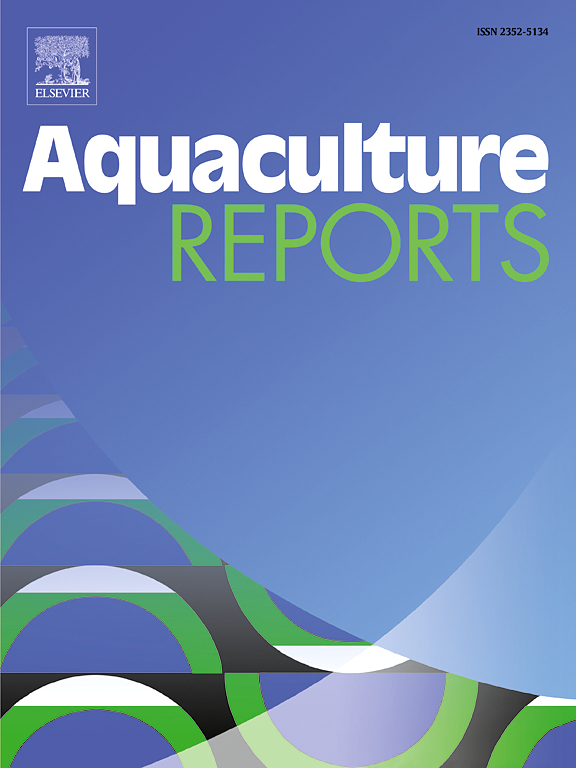The physiological implications of dietary high-amylose starch on the growth performance, hepatic health indices, lipid metabolism, and intestinal microbiota composition in largemouth bass (Micropterus salmoides)
IF 3.2
2区 农林科学
Q1 FISHERIES
引用次数: 0
Abstract
The present study aimed to explore the impacts of dietary high-amylose corn starch (HACS) as a substitute for conventional corn starch (CS)on the growth performance, hepatic health, lipid metabolism, and intestinal microbiota of largemouth bass. Five isonitrogenous and isolipidic feeds (47.90 % protein and 9.44 % lipid) were formulated with varying levels of HACS replacing CS at 0 % (HACS0), 2.5 % (HACS2.5), 5 % (HACS5), 7.5 % (HACS7.5), and 10 % (HACS10) for a 10-week growth trial with largemouth bass (initial body weight 10.02 g). The findings revealed that substituting CS with HACS in the feed elevated the final body weight, weight gain rate, and specific growth rate of largemouth bass. Additionally, the dietary replacement of CS with HACS tended to downregulate the hepatic mRNA expression levels of pro-apoptotic regulators (bcl-2 associated x a, apoptosis-related cysteine peptidase 3, and apoptosis-related cysteine peptidase 7) in largemouth bass. Histological examination of the liver indicated that the HACS2.5 group had a more intact and distinct hepatic structure than the HACS0 group. Moreover, dietary substitution of CS with HACS reduced serum triglyceride levels and liver lipid content, and there was a tendency to downregulate the mRNA expression of lipid synthesis metabolism-related genes (acetyl-CoA carboxylase 1, sterol regulatory element binding transcription factor 1, fatty acid synthase) in the liver. Concurrently, the HACS2.5 group upregulated the mRNA expression of lipolysis metabolism-related genes (carnitine palmitoyltransferase 1, peroxisome proliferator-activated receptor α, adipose triglyceride lipase) compared to the HACS0 group. Regarding the intestinal microbiota, the HACS2.5 group increased the abundance of Fusobacteriota, Cetobacterium, and Cetobacterium somerae, while decreased the relative abundance of Proteobacteria compared to the HACS0 group. Overall, dietary substitution of CS with HACS enhanced the growth performance of largemouth bass, potentially through the modulation of hepatic lipid metabolism equilibrium and the intestinal microbiota composition.
求助全文
约1分钟内获得全文
求助全文
来源期刊

Aquaculture Reports
Agricultural and Biological Sciences-Animal Science and Zoology
CiteScore
5.90
自引率
8.10%
发文量
469
审稿时长
77 days
期刊介绍:
Aquaculture Reports will publish original research papers and reviews documenting outstanding science with a regional context and focus, answering the need for high quality information on novel species, systems and regions in emerging areas of aquaculture research and development, such as integrated multi-trophic aquaculture, urban aquaculture, ornamental, unfed aquaculture, offshore aquaculture and others. Papers having industry research as priority and encompassing product development research or current industry practice are encouraged.
 求助内容:
求助内容: 应助结果提醒方式:
应助结果提醒方式:


